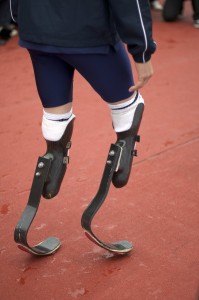Technological implants- Therapy or Enhancement?
Technological implants in human beings is not a new phenomenon. The pacemaker is used by many people around the world to help their heart function appropriately. For the past few years, cochlear implants have been performed on people whose hair cells in the inner ear become unresponsive. In this case the implant acts as a replacement for the lost functionality of hair cells. In both these examples, technology is used as a therapy in order to assist in normal functioning of the human being. In the case of cochlear implants, it has been observed that the person with the implant takes few weeks or months to get used to it. It is claimed that though the person is able to hear sounds again, the sounds that they hear is different from what they had experienced before going deaf. In the case of a child which is born deaf, the sounds heard due to the cochlear implant will be the only sounds known. Technology here is a mediator in helping humans achieve their goal of being able to hear sounds. There is no original perception mediated by technology but the mediated perception itself is the original (Ihde, 1990). But what if cochlear implants allowed humans to hear ultrasonic sounds. Humans without cochlear implants cannot hear ultrasonic sounds. In this case, would cochlear implants be a form of therapy or enhancement?
One of the first commercial application of RFID implants was in the field of medicine in order to monitor the patient. This would be considered as a therapy by the hospital. But if we consider the umpteen number of people who do not have access to such technology but have the same diseases, it does seem that patients with implant are privileged and that the implant is an enhancement to their functioning as human beings. Some might say that the privileged ones are ‘better than normal’ (Kurzweil, 2005). They can upload their information or data into the database of the hospital through the internet unconsciously. They don’t need to click a button to send the information. In certain regards, they are uploading a part of themselves which could be looked upon as extending their memory (Clark & Chalmers, 1998). They may not consciously know or remember their current blood sugar level but the medical database of their hospital is updated with the information that can be accessed later if needed.
One possible application of RFID chips would be to implant them on finger tips of a person. Let us consider that a policeman is implanted with an RFID chip containing an infrared sensor, which senses heat, on the index finger of his right hand. If he is entering a house which is dark to catch a crime suspect, he can find in which direction the suspect is by just spatially moving his hand. This gives him additional power compared to his colleagues and is certainly an enhancement to his ‘human qualities’. But Professor Mark Gasson from Reading University has a different view. He does not consider the implants as an enhancement (Gasson, Human implants from invasive to pervasive at TEDxGoodenoughCollege, 2012). Though very few people have RFID implants now, he thinks that soon almost everyone will have it. He compares RFID implants to mobile phones. Earlier very few used mobile phones but in a few years almost everyone in developed and developing nations considers it as a necessity and feels out of place if they do not have a mobile phone. It is possible that in the near future, implants may not remain optional but may become compulsory.
References:
Clark, A., & Chalmers, D. J. (1998). The Extended Mind. The Philosopher’s Annual, XXI, 10-23.
Gasson, M. (2012). Human implants from invasive to pervasive at TEDxGoodenoughCollege. Retrieved from TedX: http://tedxtalks.ted.com/video/Human-implants-from-invasive-to
Ihde, D. (1990). Technology and the lifeworld. Indiana University Press.
Kurzweil, R. (2005). The singularity is near: When humans transcend biology. Viking/Penguin Group








Comments are closed.